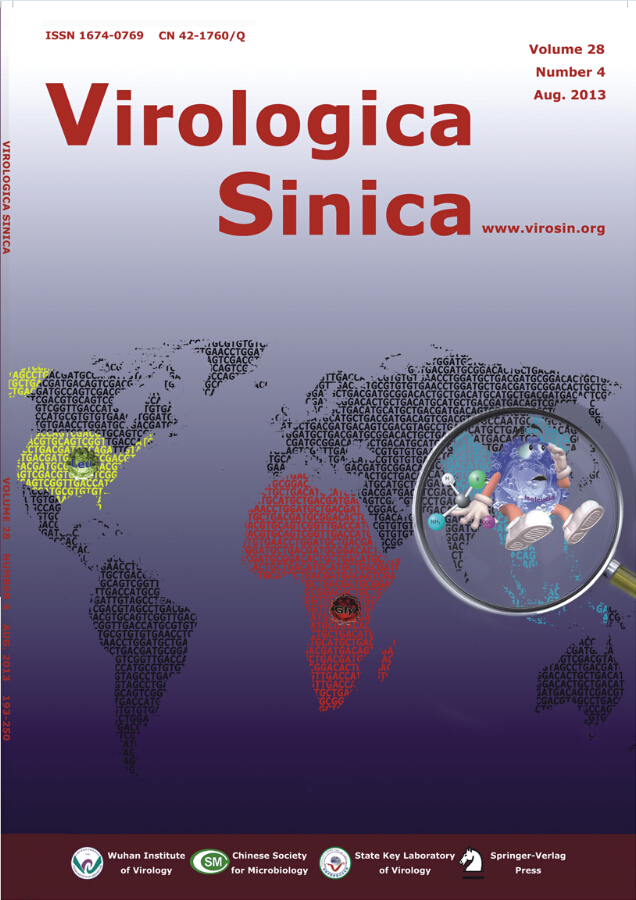Pengcheng Yu, Xinjun Lv, Xinxin Shen, Qing Tang, Guodong Liang.Establishment and Preliminary Application of a Rapid Fluorescent Focus Inhibition Test (RFFIT) for Rabies Virus .VIROLOGICA SINICA, 2013, 28(4): 223-227.doi: 10.1007/s12250-013-3321-x
Citation:
Pengcheng Yu, Xinjun Lv, Xinxin Shen, Qing Tang, Guodong Liang.
Establishment and Preliminary Application of a Rapid Fluorescent Focus Inhibition Test (RFFIT) for Rabies Virus .VIROLOGICA SINICA, 2013, 28(4)
: 223-227.
http://dx.doi.org/10.1007/s12250-013-3321-x
Establishment and Preliminary Application of a Rapid Fluorescent Focus Inhibition Test (RFFIT) for Rabies Virus
-
Key Laboratory of Medical Virology and Viral Diseases, Institute for Viral Disease Control and Prevention, Chinese Center for Disease Control and Prevention, Beijing 102206, China
-
Corresponding author:
Qing Tang, qtang04@sina.com
-
Received Date:
11 March 2013
Accepted Date:
24 July 2013
Published Date:
25 July 2013
Available online:
01 August 2013
Fund Project:
National Department Public Benefit Research Foundation 201103032
-
Abstract
The World Health Organization (WHO) standard assay for determining levels of the rabies virus neutralization antibody (RVNA) is the rapid fluorescent focus inhibition test (RFFIT), which is used to evaluate the immunity effect after vaccination against rabies. For RFFIT, CVS-11 was used as the challenge virus, BSR cells as the adapted cells, and WHO rabies immunoglobulin (WHO STD) as the reference serum in this study. With reference to WHO and Pasteur RFFIT procedures, a micro-RFFIT procedure adapted to our laboratory was produced, and its specificity and reproducibility were tested. We tested levels of RVNA in human serum samples after immunization with different human rabies vaccines (domestic purified Vero cell rabies vaccine (PVRV) and imported purified chick embryo cell vaccine (PCECV)) using different regimens (Zagreb regimen and Essen regimen). We analyzed the levels of RVNA, and compared the immune efficacy of domestic PVRV and imported PCECV using different immunization regimens. The results showed that the immune efficacy of domestic PVRV using the Zagreb regimen was as good as that of the imported PCECV, but virus antibodies were generated more rapidly with the Zagreb regimen than with the Essen regimen. The RFFIT procedure established in our laboratory will enhance the comprehensive detection ability of institutions involved in rabies surveillance in China.
-

-
-
References
-
Yu P C, Noguchi A, Inoue S, Tang Q, Rayner S, Liang G D. 2012. Comparison of RFFIT test with different standard sera and test procedures. Virol Sin. 27(3):187-193.
doi: 10.1007/s12250-012-3247-8
-
Ministry of Health of the People's Republic of China. 2009. Situation of rabies prevention and control in China.
-
World Health Organization. 2005. WHO Expert Consultation on Rabies. WHO technical report series #931. World Health Organization, Geneva, Switzerland.
-
World Health Organization. 1992. WHO Export Committee on Rabies. 8th Report. World Health Organization Press, Geneva, Switzerland.
-
Yin C P, Zhou H, Wu H, Shen X X, Wang L H, Yin W W, Wang S M, Tang Q. 2011. Epidemiological analysis of rabies in 2010, China. Chin J Exp Clinic Virol. 25: 434-436. (in Chinese)
-
Péharpré D, Cliquet F, Sagné E, Renders C, Costy F, Aubert M.. 1999. Comparison of visual microscopic and computer-automated fluorescence detection of rabies virus neutralizing antibodies. J Vet Diagn Invest. 11(4):330-333.
doi: 10.1177/104063879901100406
-
Khawplod P, Inoue K, Shoji Y, Wilde H, Ubol S, Nishizono A, Kurane I, Morimoto K 2005. A novel rapid fluorescent focus inhibition test for rabies virus using a recombinant rabies virus visualizing a green fluorescent protein. J Virol Methods. 125(1):35-40.
doi: 10.1016/j.jviromet.2004.12.003
-
Proportional views

-












